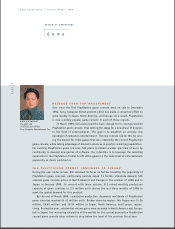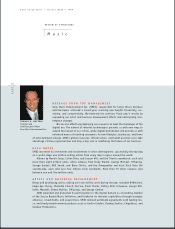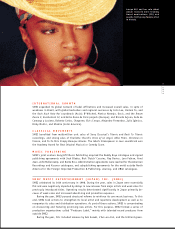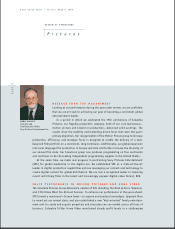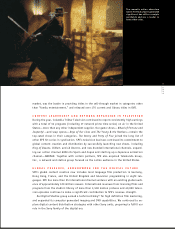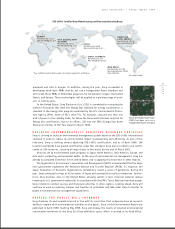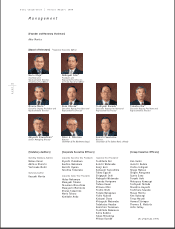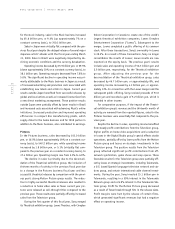Sony 1999 Annual Report Download - page 28
Download and view the complete annual report
Please find page 28 of the 1999 Sony annual report below. You can navigate through the pages in the report by either clicking on the pages listed below, or by using the keyword search tool below to find specific information within the annual report.
26
page
Sony Corporation Annual Report 1999
Recognizing that environmental conservation is one of the most pressing issues facing mankind
today, Sony incorporates a sound respect for nature in its business activities. Based on this philosophy,
Sony conducts environmental programs under a global action plan.
During the year under review, an environmental strategy was incorporated as a key element of
Sony’s medium-term business plan. Sony’s environmental strategy sets forth targets for environmen-
tal conservation and other activities, with the ultimate goal of helping to create an environmentally
self-sustaining society in which resources move through a cycle of reuse. Based on this strategy,
Sony has set targets for operations in Japan, North America, Latin America, Europe, and Asia.
DEVELOPING TECHNOLOGIES TO PROTECT THE ENVIRONMENT
Sony is striving to promote R&D programs that focus on the environment. In Japan, the Environmental
Technology Center, located within the Frontier Science Laboratories, is developing a broad range of
technologies that protect the environment. Outside Japan, the Environmental Product Laboratory was
set up in Stuttgart, Germany to study methods for assessing the environmental impact of Sony products.
In the field of recycling technologies, Sony opened during the year the Sony Limonene Expanded
Polystyrene Recycle Research Center in Japan’s Aichi Prefecture to study the reuse of waste styrene
foam as high quality polystyrene by using liquid
limonene, a substance extracted from citrus rinds.
Sony applied this technology to recycle styrene foam
as TV packaging material and plans to apply the same
technology to other products. In 1996, Sony devised
a method to transform polystyrene, found in video
cassette shells and other products, into a water-soluble
polymer. This polymer can then be used as a polymer
flocculant agent for treating waste water. Sony is
conducting tests to introduce this technology at its
own manufacturing facilities as well as joint experi-
ments with other companies in order to apply this
technology more widely.
Environmental Activities
at Sony
The reduction process for styrene foam, using limonene
expanded
polystyrene
(125 cm3)
after 1 min. after 3 min.
REDUCING THE ENVIRONMENTAL IMPACT OF SONY PRODUCTS
Sony has been working to reduce the environmental impact of its products, starting with the planning
and design stages. To this end, the Greenplus Project, involving the whole Sony Group, commenced in
1994. Its aim is to reduce the environmental impact of all Sony products by the end of March 2001.
Sony is making efforts to increase the use of single/double-sided printed wiring boards (PWBs)
that do not use a halogenated flame retardant, which may generate toxic substances such as dioxins
at the time of incineration. As a start, these boards have been used in color TVs and video decks




